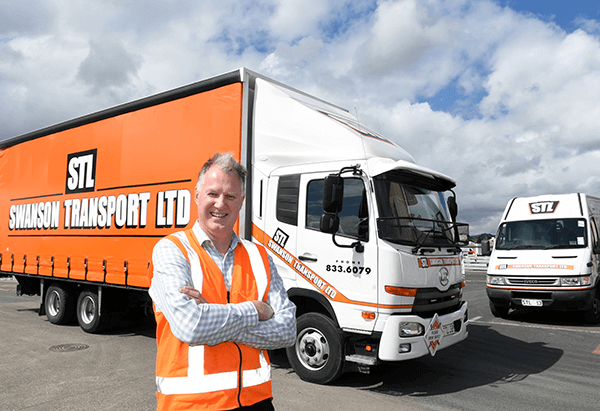3G Shutdown
Switch before the 3G network closes for good
Spark NZ and One NZ have both committed to switching off their 3G networks in lieu of 4G and other IoT technologies. This means that if any of your vehicles and assets across your business, including your fleets, rely on 3G technologies, you'll lose connection and will need to move over to 4G-powered devices moving forward.
While this may seem to be a while away, ensuring you get ahead of your requirements is important.
Most of the telecom providers are switching off the 3G networks at the end of 2025, and Spark to close its 3G network on 31 March 2026, our goal is to ensure that when these dates come, you'll still have the great connectivity you've come to rely on for so long.
There are steps you can take to get started with Teletrac Navman in your journey to modern 4G technology. Or maybe you have some questions, here's a huge list of Frequently Asked Questions we've come across that may just answer your question.
Simplify the complex. It's our job to make your job easier, so let us help you.
Get the eBook Watch VideoUPGRADE BEFORE TIME RUNS OUT
3G Network ShutdownDriving Better Outcomes
Teletrac Navman are driving better outcomes for greener and more competitive fleets.
Teletrac Navman’s modern technologies are AI-enabled, meaning you can grow your business through informed decisions and real-time information, essentially allowing you to get more out of your day with less effort.
Staying ahead of the curve is important to not only stay competitive, but also helps you ensure you’re efficient, productive, and safe. It can reduce risk and can also help to reduce disruption in your everyday workflow. With that in mind, here’s some of the benefits of coming on board to Teletrac Navman.
Find out more about how switching to Teletrac Navman is the right move for you.






Expansive Install, Service & Account network across New Zealand
Access to solution specialists and success specialists that can provide advice and support when needed
24/7 online training available along with a dedicated customer support team
Advanced data security to ensure the safety of your data – our solutions are built with strength and integrity
We’re here to stay, with over 25 years of operation and backed by Vontier, a Fortune 500 company
No matter the asset, we have a solution for you to track it - get connected with an all-in-one solution
OPERATIONAL EFFICIENCY
Get the visibility and insight you need to run your fleet
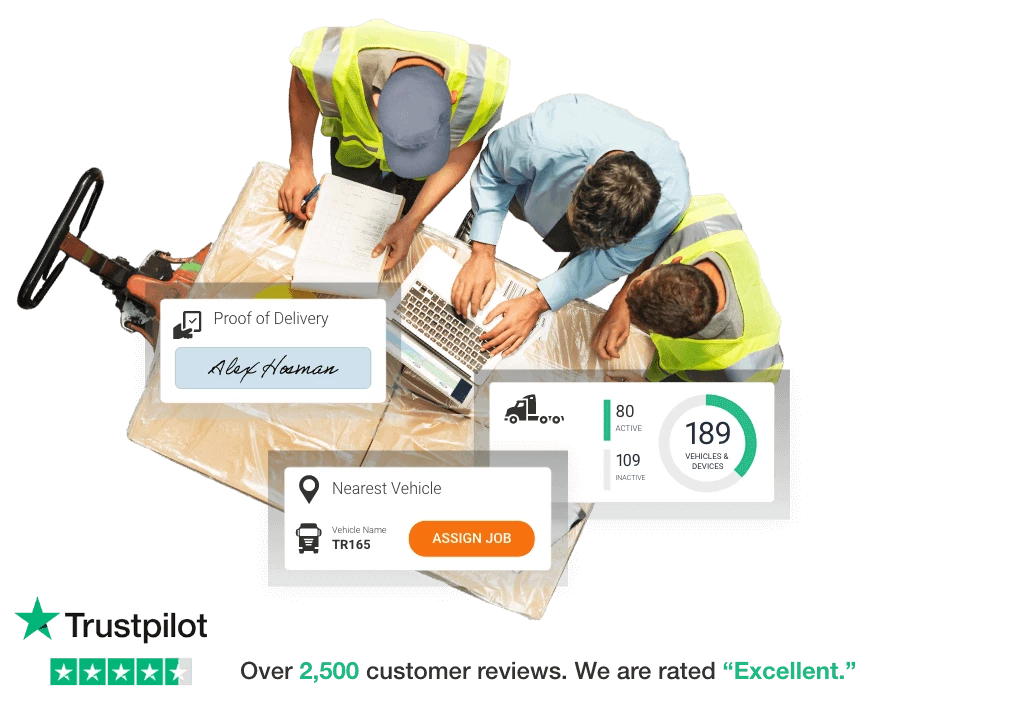
Fleet Management Software & Solutions
With real-time location tracking, high-definition and instant data capture from driver apps and industry-leading analytics, you will have everything you need to keep your fleet on the road and running effectively. We have 4G powered telematics to keep you powered through to the next decade.
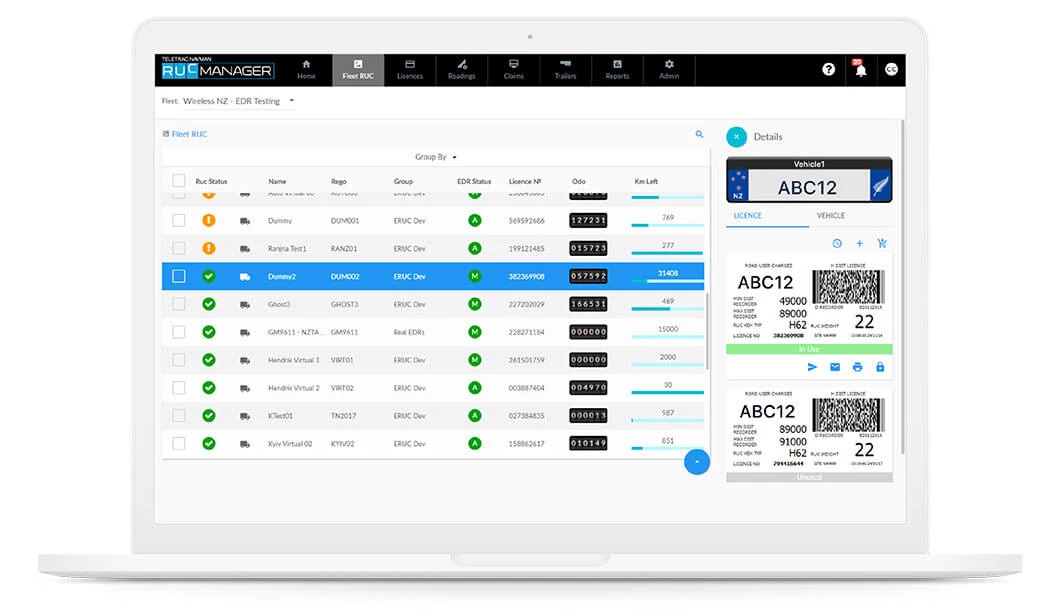
Electronic Road User Charges
With an electronic distance recorded (EDR) affixed to the windscreen of the truck or fitted to the axle of the trailer, RUC Manager enables your business to streamline the entire RUC process and automates RUC compliance.
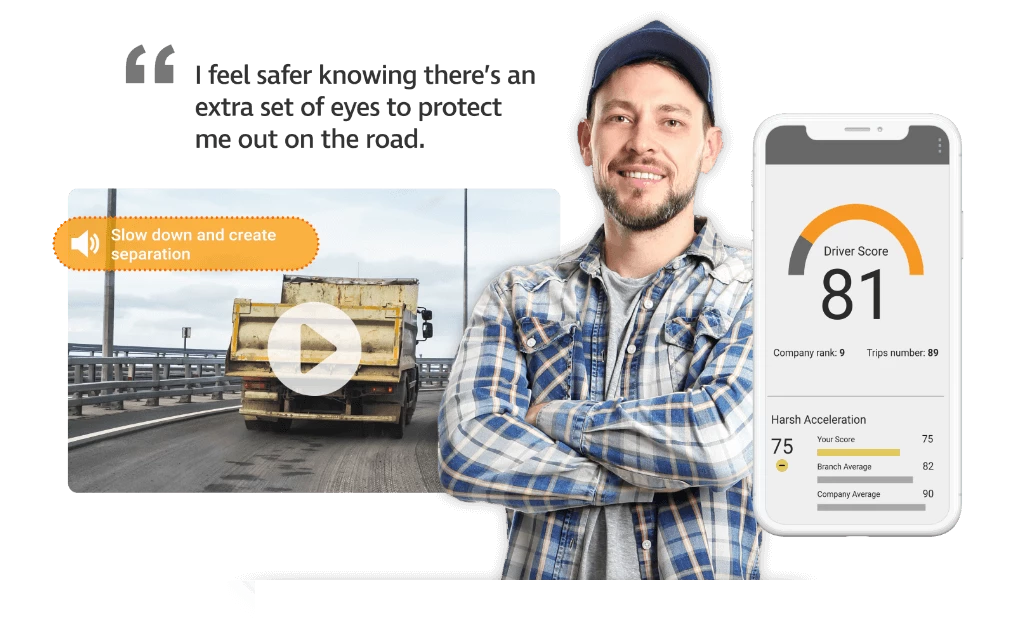
Video Telematics
Our diverse range of fully connected cameras deliver the real-time visibility you need to simplify risk management. All our cameras are fully integrated into our fleet management software, TN360, so you can easily access the data you need to improve safety, streamline coaching and protect drivers.
With the latest video AI capabilities, our integrated coaching applications and numerous camera solutions you get the flexibility to select the cameras that are perfect for your business.
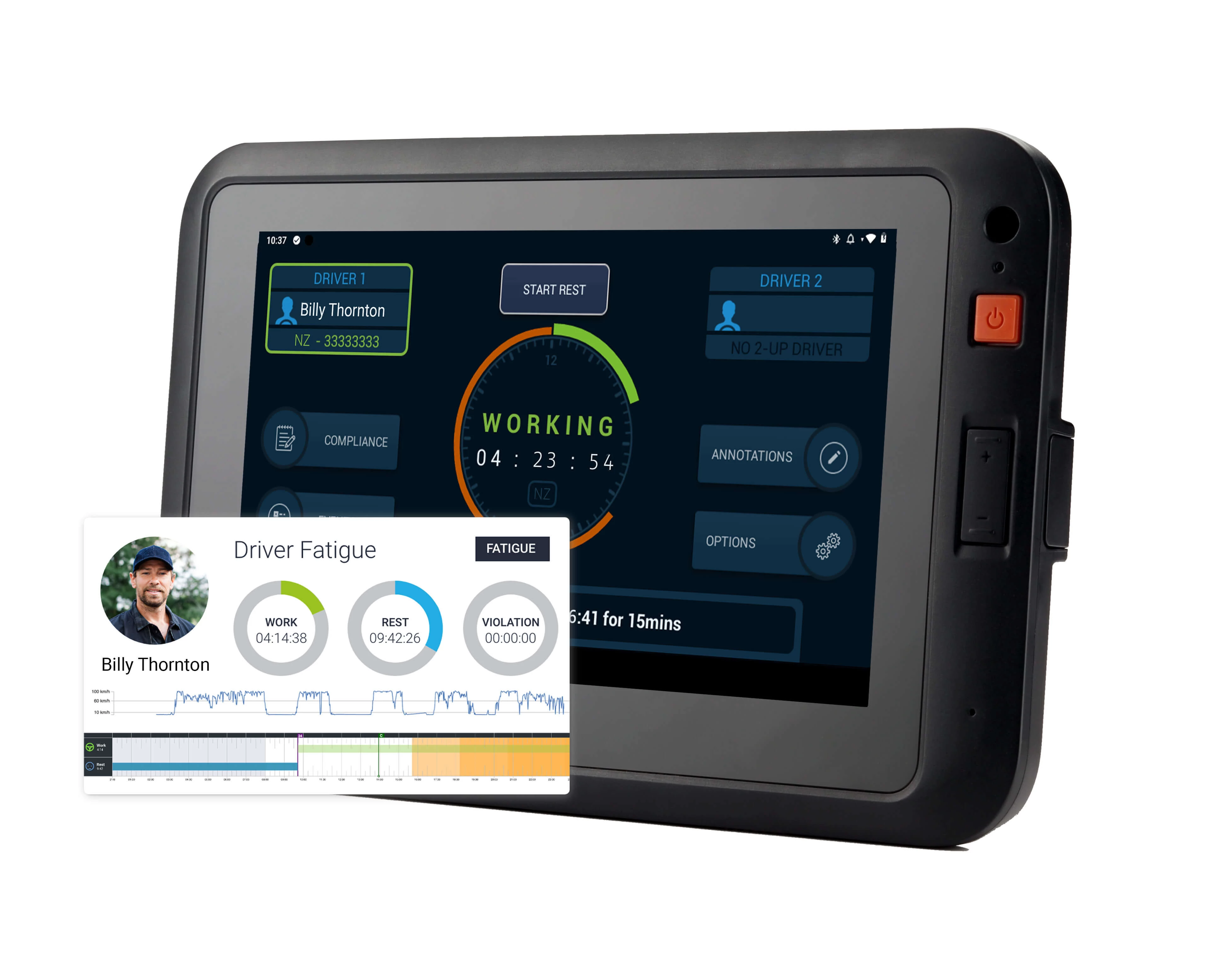
Electronic Driver Logbook
Replace your paper-based logbook with an NZTA-approved electronic driver logbook (EDL) solution to meet your fatigue management requirements.
The driver is able to view their current status, tap to start work or rest during every journey, view rest break calculations, available work hours and all relevant data on the device.
Switch before the 3G network closes for good
From 2025, One NZ and Spark NZ's 3G switch-off will take place. This means that some, if not all, of your devices within your vehicles and assets will cease to operate. If you have any devices with 3G-powered telematics, you have till that date to make the switch.
You’ve probably got questions. Below are some topic areas, feel free to click through and hopefully we can help you answer. You are also able to find out a little more about the 3G shutdown via Spark NZ's FAQ.
What does this mean for me?
Once the shutdown happens, any 3G hardware will no longer be able to communicate, and thus you will lose access to the visibility you get with our services. No more real-time tracking, no more alerts, no more insights, and so on, for all those affected vehicles.
What do I need to consider?
As you could imagine, with less than 9 months to go, the demand for devices and a swift migration will be high. Demand for installers across the country will be limited, so for us to ensure a smooth transition for you, the earlier you get onto migrating, the easier it’ll be for you.
What is the reason behind Kiwi mobile network operators’ decision to close their 3G networks?
Top mobile network operators like Spark NZ, 2degrees and One NZ are switching off their 3G networks due to the increased adoption of 4G and 5G services globally. As the use of 3G has declined, local 3G providers have made the decision to reallocate resources and infrastructure to support the newer, more advanced network technologies. Find more information about One NZ, 2degrees and Spark NZ.
How will the closure of NZ’s mobile network operators’ 3G networks affect businesses?
The shutdowns will have a significant impact on businesses that rely on 3G-only devices for their operations. It means that these businesses will need to transition to newer 4G and 5G devices to ensure uninterrupted connectivity and efficient functioning of their transport operations.
What are the implications of using 3G-only devices after the network closure?
Following 3G network closure, these devices will no longer be compatible with the network infrastructure. As a result, businesses using 3G-only devices will experience a loss of connectivity and functionality.
Which devices will be impacted by the closure of the 3G networks?
The closure of the 3G networks will impact any device that relies on 3G connectivity. This includes not only smartphones but any other device that communicates via a SIM card, such as vehicle telematics, security systems, older payment solutions and more.
What is the timeline for the phase-out of 3G networks by major providers, and why is it important for fleet owners to be aware of these dates?
The phase-out of 3G networks by major providers has already begun. One NZ, Spark NZ and 2degrees have all begun phasing out parts of their 3G networks. One NZ and 2degrees will implement the 3G switch-off towards the end of 2025 whereas Spark NZ will switch-off at the end of March 2026.
It is important to be aware of these dates to ensure sufficient time to transition to newer devices, avoid potential disruptions and maintain seamless connectivity.
Is there a recommended timeline for businesses to complete the transition from 3G to newer devices?
It is important to start the process as early as possible. Starting sooner rather than later allows businesses to carefully assess their needs, research available options, and allocate sufficient resources for a smooth transition without rushing or facing potential delays as the 3G network closure approaches.
How can fleet owners ensure they are well-prepared to handle the 3G sunsetting?
To ensure they are well-prepared to handle the 3G sunsetting, fleet owners should reach out to a Teletrac Navman consultant, who can offer solutions and support for the transition.
Consider migrating devices in stages or prioritising critical devices to minimise disruptions and manage the transition more effectively.
What should businesses do if they rely on 3G-only devices but have not yet started the migration process?
Businesses that rely on 3G-only devices should take immediate action. Begin by assessing devices and determining your migration needs. Our Teletrac Navman team can help by discussing transition requirements and available options. Starting the migration process as soon as possible will help mitigate the risk of disruptions and ensure a smooth transition to newer devices before the 3G networks are phased out entirely.
Are there specific recommendations for migration timeframes?
While specific recommendations for migration timeframes may vary based on individual circumstances, the general principle is to start the migration process early. Starting early provides businesses with ample time to research, plan, and execute the transition smoothly. It allows for careful evaluation of available options, negotiation with providers, testing of new devices, and addressing any unforeseen challenges that may arise.
What are the benefits of starting the migration process early for businesses?
Benefits include:
- Sufficient time for evaluation. Starting early allows businesses to thoroughly evaluate their device needs, consider available options, and select the most suitable devices and solutions for their fleet operations.
- Seamless transition planning. Early planning ensures a well-structured migration process, allowing for phased implementation, testing, and troubleshooting without rushing or facing potential disruptions.
- Access to installation resources. As we approach the cut-off date, demand for installation resources and support will surge so starting early is the best way to avoid potential pain.
- Regulatory compliance: Early migration ensures businesses can meet any regulatory requirements related to fleet management and connectivity without risking non-compliance penalties.
What challenges might businesses face if they wait to migrate closer to the cut-off date?
Waiting to migrate closer to the cut-off date poses several challenges for businesses, including:
- Limited availability of resources. As the cut-off date approaches, the demand for installation resources, device inventory, and support services is likely to increase. Waiting too long may result in delays or difficulties in accessing these resources.
- Time constraints. Leaving the migration process too late may result in a poor transition and potential disruptions in fleet operations.
- Increased costs: Waiting until the last minute may result in higher costs for devices, installation services, and support, as the cost-of-living price increases have the potential to affect both goods and labour.
- Potential non-compliance: If businesses fail to complete the migration in time, they risk non-compliance with regulatory requirements, which could lead to penalties or operational disruptions.
How can fleet owners minimise vehicle downtime during the transition process and ensure a smooth upgrade from 3G to newer devices?
Minimise vehicle downtime during the transition process and ensure a smooth upgrade from 3G to newer devices, by considering the following.
- Get in and talk to a provider before the shutoff date to discuss your options.
- Identify critical devices or vehicles that require immediate migration and prioritise their upgrades to minimise disruptions in essential operations.
- Conduct thorough testing and troubleshooting of newly installed devices before fully deploying them in the fleet to ensure functionality and compatibility with existing systems.
- Train drivers and staff on the use of new devices and provide necessary support during the transition period to address any challenges or questions that may arise.
Why is it crucial for fleet owners to implement a migration plan well in advance of their wireless network provider's 3G sunset period?
It is crucial to implement a migration plan well in advance of the 3G shutdown to avoid last-minute rush and potential disruptions. By planning ahead, fleet owners have sufficient time to evaluate their needs, research available options, engage with providers, allocate resources, and ensure a smooth transition. Implementing the migration plan early allows for proper testing, troubleshooting, and addressing any unforeseen issues, ensuring that the fleet remains connected and operational throughout the process.
How can fleet owners provide reliable support for the inevitable hardware upgrade?
Engage with our Teletrac Navman team to learn about the support services we offer during the migration process, such as installation assistance, troubleshooting, and training for drivers and staff.
Are there likely to be any potential difficulties in accessing installation resources during the migration period?
Potential difficulties in accessing installation resources during the migration period are possible, especially as the demand for installation services may increase as 3G closures approach. Engaging with telematics providers well in advance and discussing the migration requirements will allow fleet owners to assess the availability of installation resources and make necessary arrangements to ensure a smooth transition.
How will the increasing demand for 4G-enabled tech affect businesses during the migration process?
The increasing demand for 4G-enabled tech during the migration process may result in higher competition for resources such as devices, installation services, and technical support. Fleet owners should be prepared for potential delays or difficulties in accessing these resources if they wait to migrate closer to the cut-off date.
What are the potential consequences for fleets that fail to upgrade their devices in time before the 3G networks are phased out?
Fleets that fail to upgrade their devices in time before the 3G networks are phased out may experience several potential consequences, including:
- Loss of connectivity: 3G devices will no longer be compatible with the network infrastructure once the network is phased out meaning 3G-only devices will lose connectivity and be unable to transmit or receive data.
- Operational disruptions: The loss of connectivity and functionality due to outdated devices can lead to operational disruptions, leading to challenges in managing routes, dispatching assignments, and coordinating with drivers.
- Compliance issues: You have a duty of care, depending on your role, to regulations outlined by the NZ Transport Agency and WorkSafe New Zealand. If you have relied on 3G devices to help you manage compliance, you can face a growing list of problems.
- Reduced efficiency and productivity: Outdated devices may lack the advanced features and capabilities offered by newer technologies, these can limit fleet owners' ability to leverage real-time data, optimise routes, and more.
- Missed opportunities for innovation: Upgrading to newer devices opens up opportunities for fleet owners to adopt emerging technologies and applications that rely on high-speed networks.
How does transitioning to modern hardware, such as 4G-capable devices, benefit fleet owners in terms of improved functionality and operational efficiency?
Transitioning to modern hardware, such as 4G-capable devices, brings several benefits to fleet owners in terms of improved functionality and operational efficiency. These benefits include:
- Enhanced connectivity: 4G networks offer faster and more reliable connectivity compared to 3G. This enables fleet owners to access real-time data, communicate seamlessly with their vehicles and drivers, and improve overall fleet management.
- Advanced features and capabilities: Modern hardware supports a wide range of advanced features and capabilities that can enhance fleet operations. These may include improved GPS accuracy, more efficient data transmission, expanded memory capacity, and compatibility with emerging technologies.
- Compatibility with new applications: 4G-capable devices allow fleet owners to leverage a growing ecosystem of applications and services specifically designed for high-speed networks. This opens up opportunities for integrating new technologies, such as AI, machine learning, and IoT, to further optimise fleet operations and gain actionable insights.
What are the advantages of faster speed, wider network coverage, and improved latency offered by 4G networks for fleet operations?
The advantages of faster speed, wider network coverage, and improved latency offered by 4G networks for fleet operations include:
- Real-time communication: Faster data speeds enable real-time communication between fleet managers, drivers, and dispatchers. This facilitates quick decision-making, efficient coordination, and timely response to changing operational needs.
- Enhanced location tracking: With wider network coverage and improved GPS accuracy, fleet owners can track vehicles with greater precision. This enables better route optimisation, reduced fuel consumption, and improved customer service.
- Efficient data transmission: 4G networks allow for the efficient transmission of large volumes of data. This is especially beneficial for telematics systems that generate and transmit data related to vehicle diagnostics, performance, and driver behaviour. The faster transmission speeds contribute to quicker data analysis and enable prompt action to improve safety, efficiency, and compliance.
- Improved driver safety and support: High-speed connectivity enables real-time access to safety applications, such as collision detection and driver behaviour monitoring. Fleet owners can receive immediate alerts in the event of emergencies or unsafe driving behaviours, allowing them to intervene quickly and mitigate risks.
How can the adoption of AI-enabled telematics systems, supported by the massive data capacity of 4G networks, contribute to safety, efficiency, and compliance gains in fleet management?
AI-enabled telematics systems bring several benefits to fleet management, including safety, efficiency, and compliance gains. Here's how:
- Safety: AI algorithms can analyse real-time data from telematics systems, such as vehicle sensors and driver behaviour, to detect and alert fleet owners to potential safety risks. This includes identifying harsh braking, acceleration, or erratic driving patterns, enabling proactive measures to be taken to prevent collisions and promote safer driving habits.
- Efficiency: AI-powered analytics can process large volumes of data generated by telematics systems, including fuel consumption, route information, and vehicle diagnostics. By leveraging this data, fleet owners can identify inefficiencies, optimise routes, improve fuel economy, and enhance overall operational efficiency.
- Compliance: AI-enabled telematics systems can assist fleet owners in meeting regulatory compliance requirements. They can track and record driver hours automatically, ensuring adherence to regulations. AI algorithms can also provide insights into compliance gaps and help fleet owners proactively address potential issues.
Why is it important for fleet owners to consider the future-proofing aspect of hardware upgrades, specifically in relation to the upcoming rollout of 4G networks?
Considering the future-proofing aspect of hardware upgrades is essential for fleet owners to ensure long-term compatibility and maximise their return on investment. Benefits of future proofing include:
- Extended device lifespan: Upgrading to 4G-capable devices ensures compatibility with the latest network technologies and standards, extending the lifespan of the devices. This minimises the need for frequent hardware replacements and reduces costs associated with device upgrades.
- Flexibility for technology advancements: Future-proofing allows fleet owners to take advantage of emerging technologies and applications that rely on high-speed networks. It provides the flexibility to incorporate new features and capabilities as they become available, enabling fleets to stay competitive and adapt to evolving industry requirements.
- Preparedness for network evolution: By upgrading to 4G-capable devices, fleet owners position themselves for smooth transitions to future network technologies, such as 5G. They can avoid disruptions and delays caused by sudden network changes, ensuring continuous connectivity and operational efficiency.
What steps should fleet owners take to craft an effective internet of things (IoT) strategy that incorporates the use of high-speed networks?
Begin with identifying your business objectives. Determine the goals and objectives that your strategy aims to achieve. This could include improving operational efficiency, enhancing customer service, or increasing safety and compliance.
Collaborate with your Teletrac Navman team to discuss available options, customisation possibilities, and integration capabilities. Our experts can help you design an IoT strategy that aligns with business needs. We can also help to develop a phased implementation plan to implement your IoT strategy in stages, prioritising critical areas and ensuring scalability.
How should fleet owners initiate discussions with their telematics providers to understand upgrade options, costs, and future tech refreshes?
To initiate discussions with telematics providers and gain insights into upgrade options, costs, and future tech refreshes, schedule a meeting with your Teletrac Navman consultant to discuss upgrade options and information about the transition process.
Talk to us about our roadmap for future technology advancements, such as 5G or emerging IoT capabilities. Understand their plans for supporting these technologies and ensure alignment with long-term fleet goals.
How do connected devices, such as telematics systems, play a role in the transport industry?
Connected devices, such as telematics systems, play a crucial role in the transport industry by enabling various functions and improving operational efficiency. Some of the key roles of connected devices in the transport industry include:
- Communication and coordination: Telematics systems facilitate real-time communication between fleet managers, drivers, and dispatchers. This allows for efficient coordination of routes, assignments, and delivery schedules, leading to optimised operations and improved customer service.
- Safety monitoring: Connected devices collect and transmit data on driver behaviour, vehicle diagnostics, and safety indicators. This data enables fleet owners to monitor driver performance, identify potential risks, and take proactive measures to ensure safety on the roads.
- Compliance management: Electronic work diaries, integrated with telematics systems, help drivers and operators remain compliant regarding fatigue schedules and rest periods.
- Asset tracking and optimisation: Connected devices enable real-time tracking of vehicles and assets, allowing fleet owners to monitor their location, utilisation, and maintenance needs. This helps optimise asset allocation, improve route planning, and reduce operational costs.
- Data-driven insights: Telematics systems generate vast amounts of data on vehicle performance, fuel consumption, driver behaviour, and more. Connected devices allow fleet owners to analyse this data to gain valuable insights and make informed decisions. These insights can help improve fuel efficiency, driver safety, maintenance scheduling, and overall operational efficiency.
- Real-time monitoring and alerts: Connected devices enable real-time monitoring of vehicle parameters such as speed, location, and engine diagnostics. Fleet owners can receive instant alerts and notifications for events such as accidents, unauthorised vehicle usage, or maintenance issues. This allows for prompt response and proactive management of critical situations.
- Improved customer service: By utilising telematics systems and connected devices, fleet owners can provide accurate and real-time information to customers regarding the status of deliveries, estimated arrival times, and potential delays. This enhances customer satisfaction and strengthens relationships with clients.
- Overall, connected devices, particularly telematics systems, have transformed the transport industry by providing valuable data, improving operational efficiency, ensuring regulatory compliance, enhancing safety, and enabling proactive decision making. They have become essential tools for fleet owners to effectively manage their operations and deliver high-quality services.
Migrating to future-proofed technology
What do you need to consider?




Get the ball rolling
Lets start with a conversation to figure out what your new solution would look like
Take stock!
Together, we can figure out which vehicles will be affected and what will need to be swapped out
Identify your needs
Now is a great time to discuss any new requirements you have to further tailor the solution to your business
Clock is ticking
Lets define a timeframe that ensures you don’t ground vehicles and assets longer than you need it to
Making the switch to future proof your business now means you’ll remain unaffected by any device concerns, and ensures your business moves into the future. With a regulatory program that can suit your needs, we are able to enable you to be more productive and more efficient than ever before.
So whether you’re needing to make the switch from 3G, or a new provider for road user charges, we’re here to help and it may only get harder and harder for a seamless switch the longer you’re embedded with a solution that just doesn’t work for your business and it’s requirements.
It just may be a simpler transition for you if you only have a small number of affected assets, but it may also be a bit more complicated - don’t worry we’re here to help. It is important for us to support you through this process with the best solution for your business moving forward.



